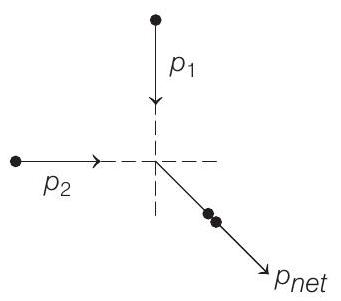Modern Physics 4 Question 3
3. Two particles move at right angle to each other. Their de-Broglie wavelengths are
(a)
(Main 2019, 8 April I)
(b)
(c)
(d)
Show Answer
Solution:
- Given, de-Broglie wavelengths for particles are
So,
and momentum of particles are
Given that, particles are moving perpendicular to each other and collide inelastically.
So, they move as a single particle.

So, by conservation of momentum and vector addition law, net momentum after collision,
Since,
Let the de-Broglie wavelength after the collision is
From Eqs. (i) and (ii), we get






